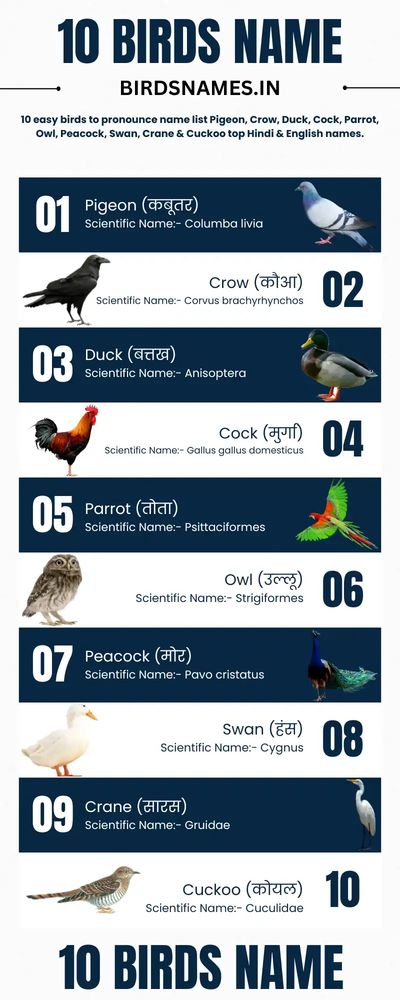Get Birds Name in Hindi and English With Pictures


Birds have fascinated people for centuries with their diverse and remarkable abilities, including their unique and often acrobatic flying skills.
While many birds are known for their soaring, gliding, or diving abilities, one bird in particular stands out for its ability to fly backwards: the hummingbird.
In this article, we will explore the incredible flight capabilities of these tiny birds, including how they are able to fly backwards, and some of the evolutionary adaptations that make this possible.
If you want to learn about Birds Name, click here on the link.
The Anatomy of a Hummingbird
Hummingbirds are among the smallest birds in the world, with the bee hummingbird of Cuba measuring in at just 2.25 inches in length and weighing only 0.06 ounces.
Despite their small size, hummingbirds have incredibly strong and efficient flight muscles, allowing them to hover in mid-air for extended periods of time.
How Hummingbirds Fly
One of the most unique features of hummingbirds' flight is their ability to hover in place, which is accomplished by rapidly flapping their wings at a rate of 50 to 80 times per second.
This allows them to maintain a stationary position in mid-air while feeding on nectar from flowers or catching insects.
Flying Backwards: A Hummingbird's Special Skill
While many birds are capable of flying forwards, few are able to fly backwards.
However, hummingbirds have evolved a specialized flying technique that allows them to move in any direction they choose, including backwards.
This is made possible by the structure of their wings, which are shaped like a figure-eight and rotate in a way that allows them to generate lift on both the upstroke and the downstroke.
Evolutionary Adaptations for Flight
Hummingbirds have evolved a number of unique adaptations that make their flight capabilities possible.
For example, their bones are lightweight and hollow, reducing their overall weight and making it easier for them to stay airborne.
Additionally, their hearts are proportionally larger than those of other birds, allowing them to pump blood more efficiently to their muscles during flight.
Hummingbirds and Pollination
In addition to their remarkable flying abilities, hummingbirds also play an important role in pollinating flowers.
As they feed on nectar, they inadvertently transfer pollen from one flower to another, facilitating the fertilization process and allowing plants to reproduce.
The Importance of Conservation
Despite their unique and fascinating qualities, hummingbirds are facing a number of threats to their survival, including habitat loss, climate change, and the use of pesticides.
As such, it is important to take steps to protect these birds and their habitats, including supporting conservation efforts and avoiding the use of harmful chemicals in gardening and agriculture.
In conclusion, the ability of hummingbirds to fly backwards is just one of the many remarkable adaptations that make these tiny birds so fascinating.
From their strong and efficient flight muscles to their specialized wing structure, hummingbirds are a true marvel of nature.
By understanding and appreciating these unique creatures, we can better appreciate the incredible diversity and beauty of the natural world.
Can all hummingbirds fly backwards?
Why do hummingbirds hover in mid-air?
How fast can hummingbirds flap their wings?
Why are hummingbirds important for pollination?
If you want to learn about Birds Name, click here on the link.
Copyright © 2023 Birds Name - All Rights Reserved.
Powered by GoDaddy
We use cookies to analyze website traffic and optimize your website experience. By accepting our use of cookies, your data will be aggregated with all other user data.